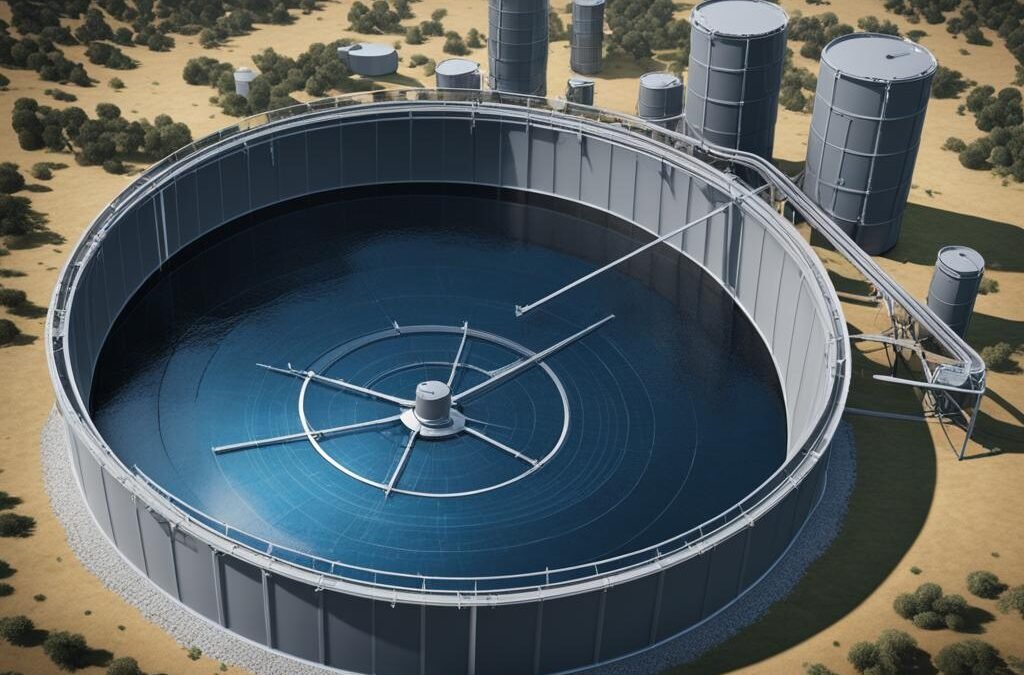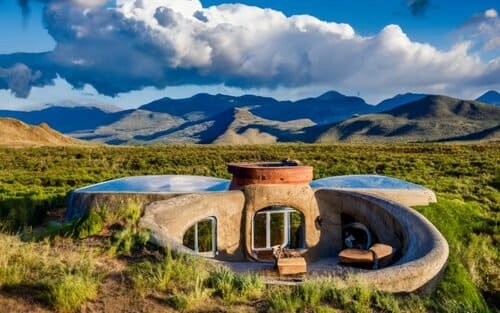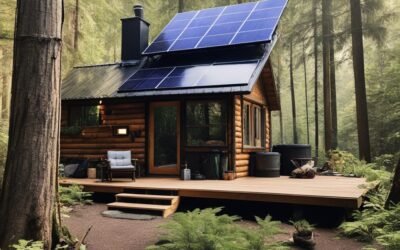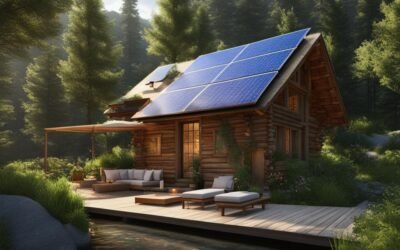Living off-grid can be an incredibly rewarding experience, but it does come with its challenges. One of the most essential aspects of off-grid living is ensuring a reliable and sustainable water supply. That’s where an off-grid gravity water system comes in.
A gravity-fed water system is the perfect solution for off-grid living as it eliminates the need for electricity and provides a constant supply of water without the hassle of manual labor. With the right setup, you can enjoy the convenience and benefits of running water in your off-grid home.
Key Takeaways:
- An off-grid gravity water system is essential for quality of life in off-grid living.
- Gravity-fed systems provide a reliable and sustainable way to secure a water supply without the need for electricity.
- Choosing the right water source, such as springs, wells, or rainwater, is crucial for setting up an off-grid gravity water system.
- Storing and treating off-grid water ensures a clean and safe water supply.
- Setting up the gravity-fed water system requires careful planning and installation.
The Benefits of a Gravity-Fed Water System
Living off-grid can be challenging, but a gravity-fed water system offers numerous benefits. It eliminates the need to haul water manually, saving time and effort. Gravity-fed systems also provide running water without the need for electricity, making them ideal for sustainable living. These systems have been used for centuries and have proven to be reliable and efficient. With the right setup, an off-grid gravity water system can provide a constant supply of clean water without the reliance on modern utility systems.
“A gravity-fed water system is a game-changer for off-grid living. It allows me to have running water in my home without the need for electricity or constantly hauling water from other sources. It’s convenient, reliable, and provides peace of mind knowing that I have a sustainable water supply.” – Sandra Johnson, off-grid homeowner
There are several key benefits to having a gravity-fed water system in an off-grid setting:
- Convenience: With a gravity-fed system, you no longer have to manually transport water to your home. It’s as simple as turning on a faucet and having a steady supply of water.
- Sustainability: Gravity-fed systems rely on the natural force of gravity to move water, eliminating the need for electricity. This makes it an eco-friendly and sustainable solution for off-grid living.
- Reliability: Gravity-fed water systems have stood the test of time. They have been used for centuries and have proven to be dependable in providing a consistent water supply.
Whether you’re living in a remote cabin or embracing a self-sufficient lifestyle on a large property, an off-grid gravity water system offers the simplicity and convenience of a reliable water supply.
Frequently Asked Questions:
Q: Are gravity-fed water systems suitable for all off-grid homes?
A: Gravity-fed systems can be adapted to various off-grid settings, including cabins, tiny homes, and homesteads. However, it’s important to assess the specific topography and water sources on your property to ensure feasibility and efficiency.
Q: Do gravity-fed systems require maintenance?
A: Like any other water system, gravity-fed systems may require occasional maintenance. This can include cleaning filters, inspecting plumbing connections, and ensuring proper water flow. However, with proper installation and regular upkeep, the maintenance requirements are minimal.
| Benefits | Summary |
|---|---|
| Convenience | No manual water hauling required |
| Sustainability | Eliminates the need for electricity |
| Reliability | Proven long-lasting water supply |
Choosing the Right Water Source
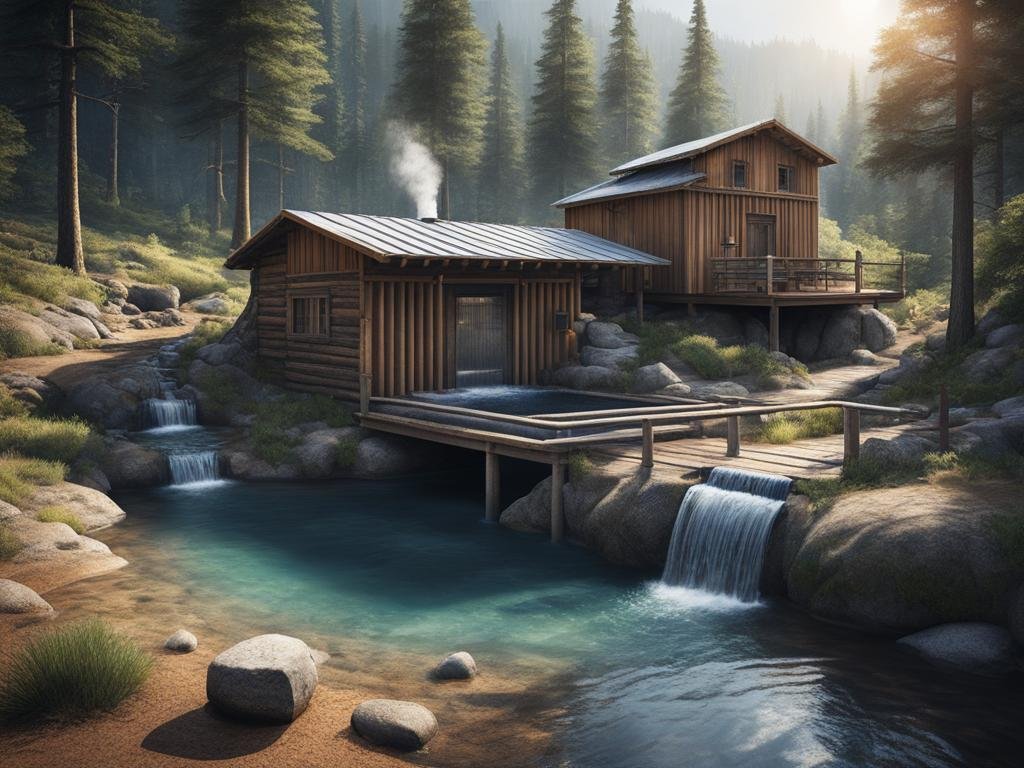 When setting up an off-grid gravity water system, it’s crucial to select the appropriate water source. Depending on the location and specific circumstances, three common options are springs, wells, and rainwater. Each water source offers its own advantages and considerations, ensuring a reliable and sustainable water supply for off-grid living.
When setting up an off-grid gravity water system, it’s crucial to select the appropriate water source. Depending on the location and specific circumstances, three common options are springs, wells, and rainwater. Each water source offers its own advantages and considerations, ensuring a reliable and sustainable water supply for off-grid living.
Springs
Springs are natural sources of groundwater and can provide a consistent flow of water throughout the year. They offer the convenience of a constant water supply without the need for additional storage or pumping. Springs are ideal for off-grid water systems as they require minimal maintenance and can deliver clean, fresh water directly to your home.
Wells
Another viable option for an off-grid water source is drilling a well to access underground water reserves. Wells provide a dependable and long-term water supply, making them suitable for areas with limited spring availability. With proper well construction and regular maintenance, the well water can be stored and gravity-fed into your off-grid system for everyday use.
Rainwater
For regions with ample rainfall, harvesting rainwater can be an excellent choice. Collecting rainwater through a catchment system, such as gutters and storage tanks, enables self-sufficiency even during dry periods. Filtering and purifying the rainwater before storing it in the off-grid system ensures safe and potable water for household needs.
“Choosing the right water source is a critical decision when setting up an off-grid gravity water system. Consider factors such as water availability, quality, and local regulations to make an informed choice.”
To provide a comprehensive comparison of the various water sources, here’s a table summarizing the key features:
| Water Source | Advantages | Considerations |
|---|---|---|
| Spring | Consistent flow throughout the year | Potential contamination from surface pollutants |
| Well | Reliable and long-term water supply | Initial drilling and periodic maintenance costs |
| Rainwater | Abundant and free source of water | Dependent on rainfall patterns and seasonal availability |
Storing and Treating Off-Grid Water
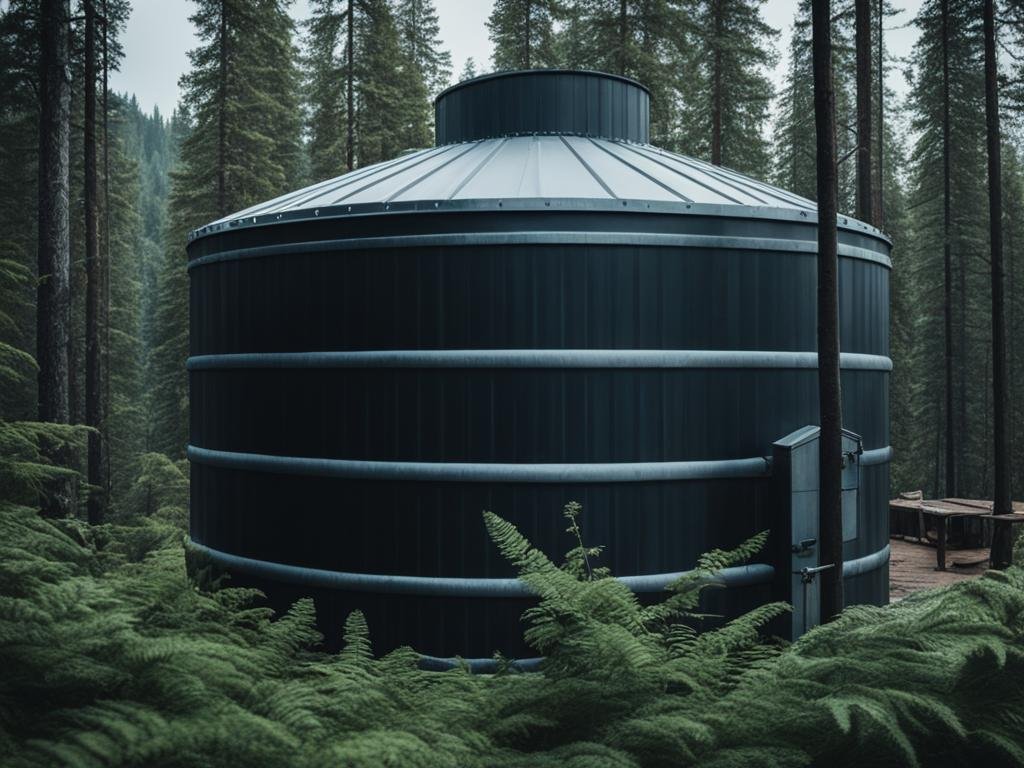 Storing and treating water when living off-grid is crucial for maintaining a reliable water supply. With various options available, it’s important to choose the right methods for water storage and treatment to ensure clean and safe water for everyday use. Let’s explore the different options and considerations for off-grid water storage and treatment.
Storing and treating water when living off-grid is crucial for maintaining a reliable water supply. With various options available, it’s important to choose the right methods for water storage and treatment to ensure clean and safe water for everyday use. Let’s explore the different options and considerations for off-grid water storage and treatment.
Water Storage Options
For off-grid water storage, two popular options are rain barrels and cisterns. Rain barrels are ideal for small-scale water storage, such as collecting rainwater for gardening or other non-potable uses. They are easy to install and provide a convenient source of water. On the other hand, cisterns are larger containers that can hold larger volumes of water. They are suitable for storing water for household use and can be customized to fit specific needs. It’s important to choose the storage option that aligns with your water needs and available space.
Cleaning and Maintenance
Regular cleaning and maintenance of water storage tanks is essential to ensure the water remains clean and safe to use. Over time, sediment, algae, and other contaminants can build up in the tanks, affecting water quality. Cleaning the tanks periodically and inspecting them for any signs of damage or leaks is necessary. Additionally, using a cover for the storage tanks can help prevent debris and animals from entering and contaminating the water.
Water Treatment
Water treatment methods play a vital role in making off-grid water potable. Filtration and purification technologies are commonly used to remove impurities and make the water safe to drink. Filtration can help remove sediment, debris, and larger particles, while purification processes like UV sterilization or chemical disinfection can eliminate harmful bacteria, viruses, and other microorganisms. Implementing a combination of filtration and purification methods can provide an extra layer of protection and ensure the water is of high quality.
Storing and treating water effectively is crucial for those living off-grid. With the right storage methods and treatment processes in place, you can have a reliable and safe water supply for your off-grid lifestyle.
Setting Up the Gravity-Fed Water System
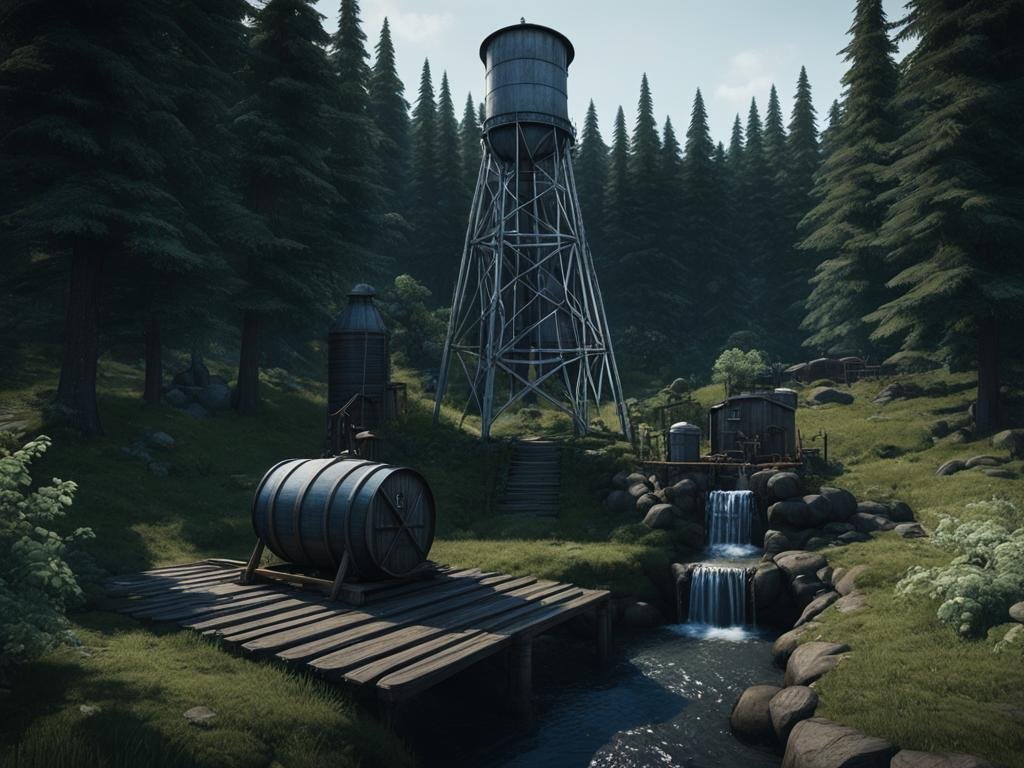 Setting up an off-grid gravity water system requires careful planning and installation. The key components of this system are the cistern or holding tank, gravity, plumbing pipes, and considerations for elevation, filtration, and future maintenance needs.
Setting up an off-grid gravity water system requires careful planning and installation. The key components of this system are the cistern or holding tank, gravity, plumbing pipes, and considerations for elevation, filtration, and future maintenance needs.
To begin, the cistern or holding tank is positioned at a higher elevation than the point of use. This allows gravity to naturally move the water through the system, eliminating the need for a water pump. The size of the cistern should be based on water consumption needs and the availability of the water source.
Plumbing pipes are then used to connect the cistern to the point of use, ensuring a continuous flow of water. It’s important to use plumbing materials suitable for off-grid systems, such as high-density polyethylene (HDPE) pipes, which are durable and resistant to freezing.
When setting up the system, it’s vital to consider the elevation and slope of the land to ensure proper water flow. It may be necessary to dig trenches or create embankments to facilitate the movement of water from the cistern to the desired location.
In terms of filtration and purification, it’s crucial to include these steps in the setup process. A combination of filters, such as sediment filters and activated carbon filters, can be installed to remove impurities from the water. Additionally, UV sterilization or chlorination methods can be employed to ensure water safety.
Future expansion and maintenance should also be taken into account. It’s advisable to include provisions for system scalability, allowing for the addition of more storage capacity or connection to alternative water sources in the future. Regular maintenance, including cleaning the cistern, checking for leaks, and replacing filters, is necessary to ensure the system’s longevity and optimal performance.
Filtration and Purification Methods
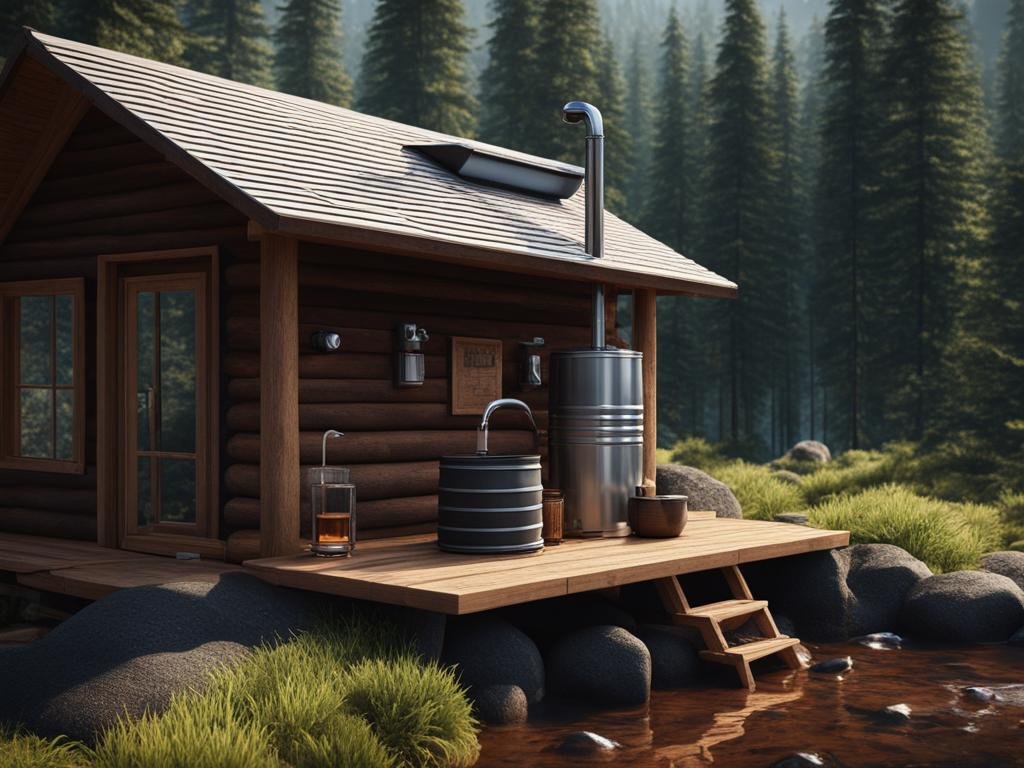 When it comes to maintaining clean and safe water in an off-grid gravity water system, filtration and purification methods are essential. These methods help remove impurities and ensure that the water is suitable for consumption. Let’s explore some of the common techniques used in off-grid water filtration and purification.
When it comes to maintaining clean and safe water in an off-grid gravity water system, filtration and purification methods are essential. These methods help remove impurities and ensure that the water is suitable for consumption. Let’s explore some of the common techniques used in off-grid water filtration and purification.
Whole House Filters
One effective method for improving water quality in an off-grid gravity water system is using whole house filters. These filters are installed at the main water supply entry point and effectively remove particles, sediment, and other contaminants. They provide clean water to all faucets and appliances throughout the house.
Bio-Sand Filters
Bio-sand filters are another popular choice for off-grid water filtration. They use layers of sand and gravel to remove impurities and improve water quality. The filters remove harmful bacteria, viruses, and other pathogens, making the water safe for drinking and cooking. Regular cleaning and maintenance are necessary to ensure optimal performance.
Chlorination
Chlorination is a common purification method used in off-grid settings to kill bacteria and disinfect water. Chlorine tablets or liquid chlorine can be added to the water storage tank or directly to the system to ensure that harmful microorganisms are eliminated. Regular testing and monitoring of chlorine levels are important to maintain water safety.
Regular Maintenance and Replacement
Proper maintenance of filtration and purification systems is crucial to ensure their effectiveness. It is important to regularly clean and replace filters according to the manufacturer’s recommendations. This ensures that the system operates at its best and continues to provide clean and safe water.
Water Pressure Considerations
In an off-grid gravity water system, the water supply is reliant on gravity for movement. However, some homeowners may choose to incorporate manual or solar-powered pumps to increase water pressure in their system. These pumps can provide the necessary pressure for improved water flow and convenience in daily use.
By implementing effective filtration and purification methods, off-grid living enthusiasts can have peace of mind knowing that their water supply is clean and safe for consumption. With the right systems in place, off-grid living can be sustainable, self-sufficient, and environmentally friendly.
| Filtration and Purification Methods | Pros | Cons |
|---|---|---|
| Whole House Filters | Removes particles and sediment from all faucets Improves water quality throughout the house | May require professional installation Filters need regular cleaning and replacement |
| Bio-Sand Filters | Removes harmful bacteria and viruses Improves water quality | Requires regular cleaning and maintenance Not suitable for large water volumes |
| Chlorination | Kills bacteria and disinfects water Effective in eliminating pathogens | Requires regular monitoring and adjustment of chlorine levels Can affect the taste of water |
| Regular Maintenance and Replacement | Ensures filtration and purification systems operate effectively Keeps water clean and safe | Requires regular attention and proper upkeep May involve additional costs for filter replacements |
Conclusion
An off-grid gravity water system is the key to achieving self-sufficiency and sustainable living. By harnessing the power of gravity, this system provides a reliable and sustainable water supply, ensuring that you can thrive in an off-grid environment without depending on modern utility systems.
Choosing the right water source is crucial in setting up your off-grid gravity water system. Whether it’s a natural spring, a well, or rainwater, assessing availability and quality is essential. Storing and treating the water is equally important. Rain barrels or cisterns can store water, and with proper cleaning and maintenance, you can have a constant supply of clean water.
Setting up the gravity-fed system requires careful planning and installation. Plumbing pipes connect the cistern or holding tank to the point of use, eliminating the need for a water pump. By considering elevation, filtration, purification methods, and future maintenance needs, you can ensure a smooth and reliable water flow.
Living off-grid comes with its challenges, but with an off-grid gravity water system, you can enjoy the simplicity and convenience of a reliable water supply. Whether you’re living in a remote cabin or homesteading on a large property, this system empowers you to achieve self-sufficiency and embrace a sustainable lifestyle.
FAQ
What is an off-grid gravity water system?
An off-grid gravity water system is a method of securing a water supply without the need for electricity. It relies on gravity to move water through the system, eliminating the need for a water pump.
What are the benefits of a gravity-fed water system?
A gravity-fed water system offers numerous benefits for off-grid living. It eliminates the need to manually haul water, saves time and effort, and provides a reliable source of running water without electricity.
How do I choose the right water source for an off-grid gravity water system?
There are several options for water sources, including springs, wells, and rainwater. It’s important to assess the availability and quality of water before making a decision.
What are the options for storing off-grid water?
Rain barrels and cisterns are common options for storing off-grid water. Rain barrels are suitable for small-scale storage, while cisterns can hold larger volumes of water.
How do I treat off-grid water for safe use?
Water treatment methods, such as filtration and purification, should be implemented to remove impurities and ensure the water is safe to use. Regular cleaning and maintenance of storage tanks and filters is also important.
How do I set up an off-grid gravity water system?
An off-grid gravity water system typically consists of a cistern or holding tank at a higher elevation than the point of use. Plumbing pipes are used to connect the cistern to the point of use, ensuring a continuous flow of water.
What filtration and purification methods can be used for an off-grid gravity water system?
Whole house filters, bio-sand filters, and chlorination can be used to remove impurities and ensure clean and safe water in an off-grid gravity water system. Regular cleaning and replacement of filters is crucial for optimal performance.

